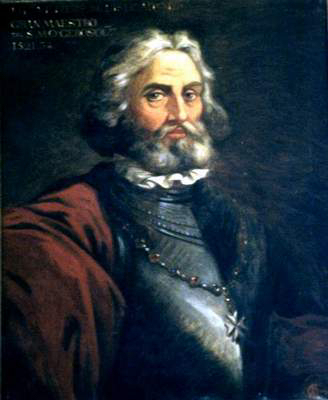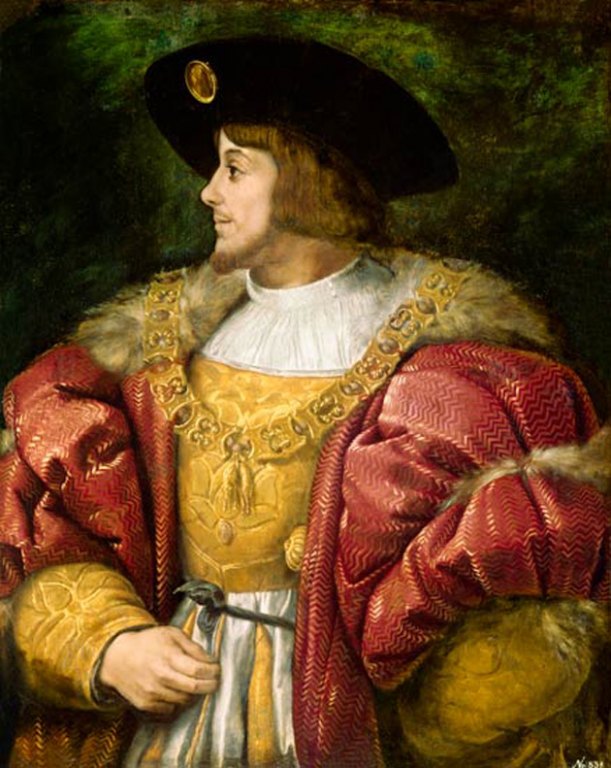 |
| The Knights of St John fortress, Rhodes |
Within a
year of his accession Suleiman turned his attention to the Knights of Rhodes.
In 1480 Mehmed the Conqueror had failed to take the island from the Knights of
St John, who had built up a powerful military base. When he first succeeded to
his father’s throne the European rulers had considered Suleiman an incompetent
voluptuary. After the destruction of the Knights hegemony over the island it
was quite clear that Suleiman was a force in his own right.
The Knights
of St John attacked shipping in the eastern Mediterranean and raided the coast
of Asia Minor and Syria, posing a permanent threat to the communications
between Istanbul and Alexandria. The Knights had given assistance to Ghazali during
his revolt. The only ruler who proffered help to the Knights was François I in
a meeting with the new Grand Master of the order, de l’Isle-Adam, in June 1521;
but the fleet ordered to Rhodes was diverted to Spain when war erupted in the
Pyrenees.
The only
other source of possible assistance for the Knights was Venice; but the
Signoria agreed a treaty with the Ottomans that gave Venice enormous trading
advantages. The treaty allowed them to retain Cyprus and Zante.
De l'Isle-Adam
Following
Islamic law Suleiman wrote to de l’Isle-Adam demanding the Knights surrender.
On the 28th July 1522 Suleiman, landing on Rhodes, ordered the start
of hostilities. Nearly two months later after continual attacks by the Turks on
the fortress, on 23rd September Suleiman gave the order for a
general assault for the following day. Like the many previous assaults this one
was not conclusive. To date 45,000 Turkish lives had been lost.
On the 1st
January 1523 de l’Isle-Adam kissed Suleiman’s hand and at midnight departed
Rhodes with less than 200 Knights and 1,600 soldiers. It was not until 1530 that
Charles V offered the Order of the Knights of St John the island of Malta as a
base[i].
Pargali Ibrahim Pasha
Pargali Ibrahim Pasha
On the 27th
June 1523 Suleiman made Pargali Ibrahim Grand Vizier to the Sublime Porte.
Ibrahim had been captured in a raid on his home of Parga on the Adriatic coast.
He was educated at the palace school in Istanbul and became a page in Suleiman’s
service, while he was Governor of Manisa.
Becoming
friends with the intelligent and attractive Ibrahim, Suleiman advanced him
quickly through the ranks. Their friendship was very intimate, they wrote to
each other when apart, taking walks and boat trips unescorted. This level of
intimacy was unheard of between a slave and a sultan.
When he
became sultan Suleiman made Ibrahim Chief of the Sultan’s Bedchamber, one of
the most important posts in the Ottoman bureaucracy. With the post of Grand
Vizier Ibrahim was now second only to his master. Ibrahim was concerned at the
speed of his ascent to the top of the empire.
‘Baudier, a 17th
century chronicler, tells us that Ibrahim asked the sultan not to promote him to
such an important position; since he was able to live in ease and tranquillity,
his services had already been adequately recompensed.’[ii]
Yet, as
Grand Vizier Ibrahim accrued more power than previous post holders; Suleiman
was unable to rule the vast empire alone. Ibrahim held the post of Grand Vizier
for thirteen years. Only the chief of Ulema[iii] did not have to give way
to Ibrahim at Friday prayers. Suleiman added to Ibrahim’s honours by making him
Beylerbey[iv] of Rumelia[v]. Ibrahim built himself a
sumptuous palace in Istanbul and allegedly married the Sultan’s sister[vi].
Rebellion in Egypt
Ibrahim
replaced Piri Pasha as Grand Vizier. The fall of Piri Pasha had been engineered
by the second most senior vizier Ahmed Pasha; hoping to receive the Grand
Vizier post. Ahmed realised that he would never replace Ibrahim and asked to be
made Governor of Egypt, where he plotted with the Mamluks, the Pope and the
Grand Master of the Knights of St John in Jerusalem. He also requested help
from other quarters. While waiting for responses he had the Janissaries
stationed in Cairo massacred and called himself sultan. His rebellion failed
when the Mamluks and Arab chieftains turned against Ahmed and he was
assassinated.
A number of
other rebellions in the region failed; Suleiman decided that the only way to
solve the problem and pacify the inhabitants was to send his most trusted
subordinate, Ibrahim, to Egypt and Syria to sort matters out. Ibrahim was
absent for a year; his first stop was Syria where he reorganised the provinces.
Ibrahim arrived
in Cairo surrounded by magnificence, overwhelming the tribes, who were subdued
and their chiefs hanged or decapitated. Those with injustices were invited to
apply for Ottoman justice and debtors were released from prison. New
regulations and tax rates were imposed, with heavy penalties for those breaking
the rules or abusing their authority. Checks and balances were imposed on the
Beylerbey, whose authority was counterbalanced by the Beys.
Trouble in Istanbul
By the time
Ibrahim returned from Cairo Suleiman had put down a revolt by the Janissaries. Suleiman
had left for Edirne and a rumour had swept the capital that he would be away
for a long period; which would mean no military campaigns in the near future[vii]. The Janissaries had
sacked the Jewish quarter and a number of palaces, including Ibrahim’s, in
Istanbul.
Suleiman
returned to the capital and killed three of the ringleaders with his own hands.
The Janissaries returned to duty and Suleiman then distributed monies among the
troops and the Aga[viii]
of the Janissaries and the Aga of the Sipahi[ix] were executed. Suleiman
now needed to wage war to pacify his own troops.
The Ottoman Empire at War
During the
winter of 1525-6 the army prepared to go to war; despite being unaware of the
objective. Suleiman had turned his attention back to Hungary, inspired by his
duty to spread the rule of Islam and his desire to create a universal monarchy.
He may also have been influenced by a letter begging for assistance, from
François 1[x]
who had been taken prisoner by Charles V at the battle of Pavia the previous
year.
Suleiman
left Istanbul on 21st April 1526 at the head of his army. Ibrahim
had been sent ahead to prepare the way for the Sultan and his army. Arriving at
Buda a bridge had already been thrown across the Sava river and the enemy had
positioned itself on the far bank of the Danube, leaving a garrison on the
south bank. The garrison was quickly taken; 500 were beheaded and the remaining
300 taken into slavery.
The
Hungarian defenders were riddled with mutual jealousy and failed to agree on
strategy. The Hungarians on the south bank of the Danube submitted to
Suleiman’s army. A pontoon bridge was thrown across the river and the army
crossed to the northern bank. The Hungarians were now massing at Mohacs, thirty
miles south. King Louis arrived with a mere 4,000 men; then reinforcements
including Poles, Germans and Bohemians brought the total up to 25,000. Many of
the Hungarian nobles stayed at home, unwilling to shore up a king many of them
wished to replace.
King Louis II
Louis was
forced to engage the Ottomans before the arrival of supporters from Croatia and
a contingent under a John Zapolya, some 40,000 men in all. On the 29th
August this motley crew were crushed by the Ottoman army. Suleiman clearly
apportioned much of the credit for the victory to Ibrahim.
‘The achievement of that
astounding victory, tragic to the Infidels yet one of the most glorious for Islam,
was due to the war-like emir, the ever prudent vizier Ibrahim Pasha, whose
lance was like the beak of the falcon of vigour and whose sword, thirsty for
blood, was like the claws of the lion of bravery.’[xi]
On the 10th
September Suleiman ordered the army’s departure and that the town and its
inhabitants were not to be attacked; the order was ignored as the Janissaries
required their loot. Suleiman returned to Istanbul at the end of November,
leaving a single garrison at Petrovaradin; this had been a punitive expedition
not a war of conquest. But the support for the Christian country of Hungary
against the Infidel was telling only in its absence.
Following
Suleiman’s departure the Hungarian nobility voted to enthrone John Zapolya as
their king. Charles V’s brother Ferdinand also had a number of supporters
amongst the nobility and he too was voted as king. With the support of his
brother Ferdinand was able to throw John Zapolya out of Hungary and in December
1527 an envoy from Zapolya arrived in Istanbul. Suleiman decided to back
Zapolya as king of Hungary keeping it weak, in preference to Ferdinand, who
would be able to call on the resources of the Holy Roman Empire, in the form of
his brother Charles.
Bibliography
Suleiman the Magnificent – André Clot,
Saqui Books 2012
Lord of the Horizons – Jason Goodwin,
Henry Holt & Co 1998
The Ottoman Empire – Halil Inalcik,
Phoenix 1997
The Ottoman Empire – Patrick Kinross,
Folio Society 2003
The Ottoman Empire – Andrina Stiles,
Hodder & Stoughton 1991
En.wikipedia.org [i] The Knight’s fortress in Malta was captured by Napoleon in 1798 during his expedition to Egypt
[ii]
Suleiman the Magnificent - Clot
[iii]
An organized political body that exercises power in the name of religion in
specific countries such as the Ottoman
Empire – Middle East Encyclopaedia
[iv]
Commander of Commanders
[v]
The Balkan peninsula
[vi]
There appears to be some doubt among recent Turkish historians that this
marriage took place.
[vii]
The low pay for a Janissary was supplemented during periods of war by a share
of the booty, in peace time they were frequently bored with their harsh life
and it was often difficult to stop them looting cities.
[viii]
General
[ix]
Cavalry
[x]
Smuggled out in an envoy’s shoes, from his prison in Madrid.
[xi]
Suleiman the Magnificent - Clot



No comments:
Post a Comment
Note: only a member of this blog may post a comment.